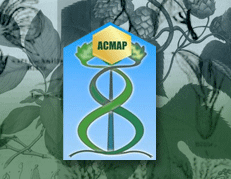Home > JMAP > Vol. 2 > Vol 2 Issues 1-2
Flavonoid-associated direct loss of rotavirus antigen/antigen activity in cell-free suspension
Abstract
Secondary plant metabolites, such as the flavonoids epigallocatechin gallate (EGCG) and proanthocyanidins (PAC) have been linked to numerous health promoting activities. Studies addressing flavonoid antiviral activity, however, have been directed towards testing infectivity and investigating inhibition of metabolic processes associated with viral growth in the host cell. Few studies have addressed the direct loss of viral activity by plant metabolites in a cell-free system. In the current study, the extent of antiviral activity by a structurally diverse group of flavonoids present in cranberry juice and grape juice (proanthocyanidins), citrus fruits (hesperidin, naringin, and diosmin), and green tea (catechins) was investigated using a quantitative antigen capture enzyme linked immunoassay (ELISA) in a cell-free system of simian rotavirus strain SA-11 (RTV). The RTV, representative of an enteric virus, was placed in MA104 cell cultures and tested by endpoint dilution. PACs at 100 and 200 g/mL caused a direct loss of virus activity at 56% and 92%, respectively, as compared with the control. Use of EGCG at 80 and 160 g/mL resulted in a loss of RTV infectivity of 45 and >98%. Individual tests with the PAC components catechin and epicatechin (EC) required increased concentrations (ca. 5000 to 10,000 g/mL) to cause an RTV antigen loss approaching 50%. The combined use of catechin and EC had no significant synergistic effect on the loss of RTV capsid antigen. Tests with the flavanones (hesperidin and naringin) and the semisynthetic isoflavone (diosmin) displayed antiviral activity at a concentration of 1200 g/mL. PAC extract at 200 g/L inhibited RTV-induced hemagglutination, suggesting an inhibitory effect on the binding of RTV antigenic determinants to RBC receptors. Gold-labeled immunoelectron microscopy showed RTV particles entrapped or sequestered with PAC aggregates. These findings suggest two things: first, recognition that the potential antiviral efficacy of flavonoids is related to structural differences between groups and within subgroups, and second, antiviral (anti-RTV) activity occurs at the virusflavonoid interface in the absence of the viral host cell.
Recommended Citation
Lipson,, Steven M. Ph.D., SV(ASCP).
2013.
"Flavonoid-associated direct loss of rotavirus antigen/antigen activity in cell-free suspension."
Journal of Medicinally Active Plants
2,
(1):10-24.
DOI: https://doi.org/10.7275/R52B8VZJ
https://scholarworks.umass.edu/jmap/vol2/iss1/3
